Microsoft creates a soldier of the future
The US Army continues fun experiments to create the appearance of a soldier of the future. This time, the US military's contractors turned out to be smart people from Microsoft. And not in the field of software, the scope of talent was somewhat different.
It all started back in 2019, when, as part of a program to develop advanced technologies to improve situational awareness and soldier capabilities, the US Army invited Microsoft engineers and other employees to a military base in North Carolina for a series of week-long boot camps.
That is, engineers and programmers were forced to play the role of soldiers on the battlefield, driven through an accelerated course for recruits.
The Microsoft team gained invaluable experience and learned a lot about navigating the terrain, maneuvering in the dark, and communicating in the field. The goal was to help engineers understand the complex environments soldiers work in, and then use that knowledge to develop a mixed reality headset that thousands of US military personnel will be working with in the near future.
- Mark Stevens, Deputy Program Manager.
The exercise was an example of a unique partnership between Microsoft and the US Army, which eventually awarded the company a contract to produce mixed reality headsets based on Microsoft HoloLens technology. The devices, using what is known as an Integrated Vision Augmentation System (IVAS), will allow soldiers to see through smoke and around corners, use holographic images for training, and project 3D terrain maps into their field of view at the touch of a button.
Soldiers who in turn took part in the program provided feedback that shaped many of the key features of the headsets.
The Army plans to begin equipping its soldiers with these headsets as early as September of this year, and leaders say the devices will revolutionize the way American soldiers train.
says Master Sergeant Mark Krug, senior staff consultant who has worked on the project since its inception.
“IVAS will inevitably save lives,” says Krug. "This is our main goal - to bring our servicemen home from any assignments."
We will talk about how true this is a little lower, but for now it is worth evaluating the work done by Microsoft employees.
In general, this program has become an indicator of how closely a civilian structure can cooperate closely with the army. Microsoft engineers kneaded the mud at army training grounds and ran through the woods, while soldiers tested prototypes, first at Microsoft's industrial design and software labs in Redmond, Washington, and then in the field. As a result, the feedback received was used to develop the next version of the device.
By February 2021, the team had collected data on nearly 80 hours of soldiers working with vehicles. Even the COVID-000 pandemic did not stop the process, just the testers switched to remote work, using all the same Microsoft developments for data exchange and visualization of work processes.
- A circle.
Microsoft technical officer Alex Kipman, who created the HoloLens and its predecessor, the Kinect line of motion-sensing devices, says the military's involvement made the project unique.
- Kipman.
Not everything was easy. I had to, for example, repeatedly redesign the glasses of the headset. With input devices in general, there were many difficulties. Early prototypes included a HoloLens headset to which engineers attached cameras, goggles with overlays. These devices met all the requirements of the army for durability, water resistance and shock resistance. But no one took into account that headsets should allow users to shoot a rifle, resting the butt against the shoulder.
Yes, it seems like a trifle, but when we tried it, it turned out that the glasses and everything hung on them simply do not allow you to aim through the standard rifle sights.
In addition, it turned out that glasses greatly impede peripheral vision. As a result, Microsoft developed more than three dozen glasses to eventually meet the needs of the soldiers.
In general, it turned out that the approach to understanding the processes of soldiers and engineers ... is somewhat different.
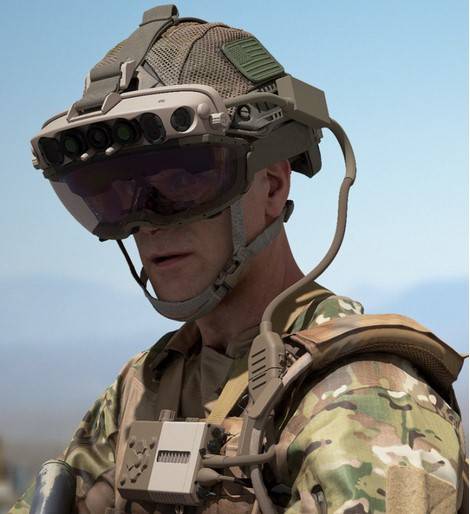
For example, Microsoft specialists have developed a “washer” (a white thing on a soldier’s chest), an interface for controlling a headset and entering data. Placed on the chest, it was convenient to manage, all processes could be carried out with one finger. But when the soldiers put on their regular backpacks and began to crawl, 90% of the test specimens failed.
The interface turned out to be very gentle for such "fine" operations as crawling on the bellies, especially in rainy conditions. I had to redo the entire structure, but in the end, Microsoft engineers were on top.
What is this not entirely clear thing and why does the US Army need it so much?
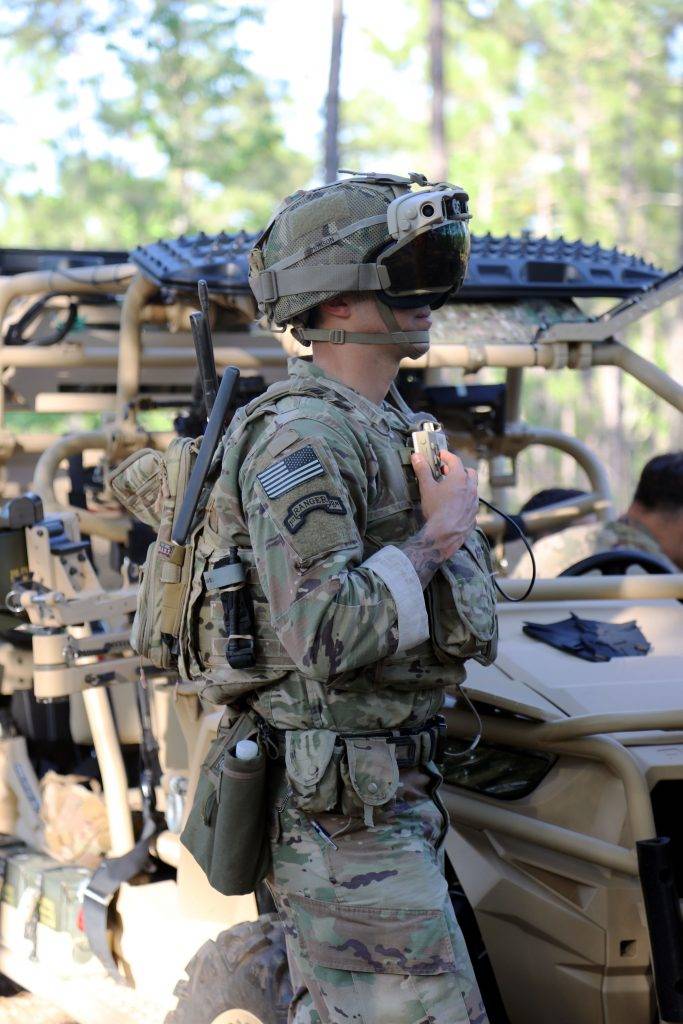
IVAS uses HoloLens mixed reality technology, as well as thermal imaging cameras, optical sensors, and GPS. The main task of this system is to improve the situational awareness of soldiers and provide them with important information that will help them plan, train and carry out missions. The devices allow soldiers to see where they are and what is around them by projecting holographic images, XNUMXD terrain maps and a compass into their field of vision.
For what? First of all, to simulate the places where the missions will take place. Instead of practicing on the ground, where models are usually assembled from improvised means, IVAS allows soldiers to use 3D maps depicting the places they will be in.
Soldiers could use IVAS to see the object of attack, for example, with their own eyes in different conditions: day, night, in moonlight, without it, in rain and fog. Thus, having studied the object and approaches to it in detail in advance, it is possible to develop an action scenario as close as possible to the ideal one.
In addition, since IVAS uses personnel location information that is distributed over the tactical network, soldiers will be able to see where other members of their platoon are, even in darkness or fog. The new thermal imaging camera processing technology will allow soldiers to see through smoke, and overall the system has improved night vision capabilities.
David Marra, Program Director of IVAS at Microsoft, praised the capabilities of the created system:
By the way, yes, "friendly fire" is the scourge of the US Army, which claimed more than one life in the same Afghanistan. Therefore, in terms of the safety of soldiers on the battlefield, this is a really big step.
IVAS can be easily connected to the scope weapons, optical or reflex, in which case the system will allow soldiers to see what the optical sight on their rifle sees and even more, allowing them to safely look around corners. The technology transmits what the scope sees to the soldier's headset, no matter which way the soldier is looking, and soldiers can exchange digital data between headsets.
While the devices are still being tested by the army, IVAS has already changed how soldiers interact, Krug says.
IVAS is being developed under an agreement that gives the Army more flexibility to rapidly develop and test new technologies in collaboration with non-standard military contractors. This agreement allowed IVAS to be developed in less than three years, much faster than a typical project of this type.
Krug says the project's success to date also depends on having the right partner. The army had an idea of what it wanted when it launched this initiative, but it took a company like Microsoft to really make it happen.
The system conceived and implemented by Microsoft is really interesting. Moreover, the option that will show where your fighters are located will be able to minimize losses from friendly fire if IVAS will be used on the battlefield in the future. In the conditions of urban development - very, very useful.
As for the image of virtual places where you have to act, this is also very useful. Seeing what the terrain looks like, walking through it, marking useful landmarks for yourself, especially in conditions of an early degree of illumination - all this can really help the fighters a lot when planning operations.
It is quite possible that Microsoft will really be able to bring "tomorrow" closer in terms of equipping US Army soldiers with new and useful equipment. It is clear that there will be a lot of questions to the new support system, but its usefulness is already obvious.
The cost of one set (by American standards) is small - 27,5 thousand dollars. Agree, it’s a bit much for a virtual reality toy, but for a system that can be used as described above, it’s not so expensive. At the very least, the US military plans to spend almost a billion on the purchase of IVAS.
I wonder what the experts of the Russian army would say about the usefulness of such a system. The fact that we will not have this, most likely, is not surprising. But it immediately seemed to me how much easier it would be for the same special forces to work, say, in Mariupol, where they could calculate in advance the actions in the back streets of the Mariupol plant.
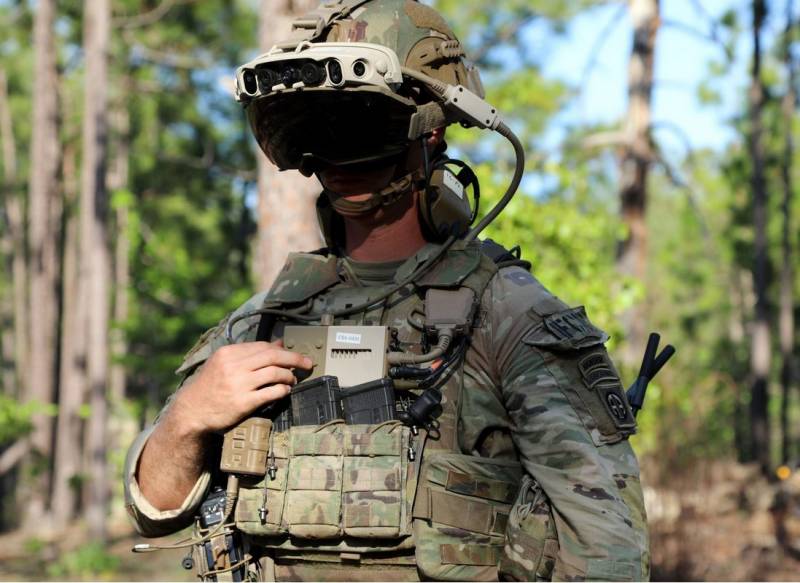
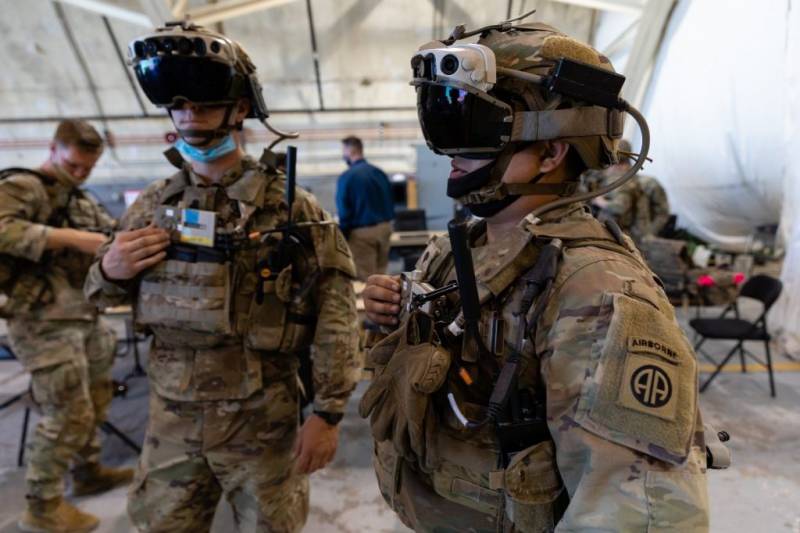
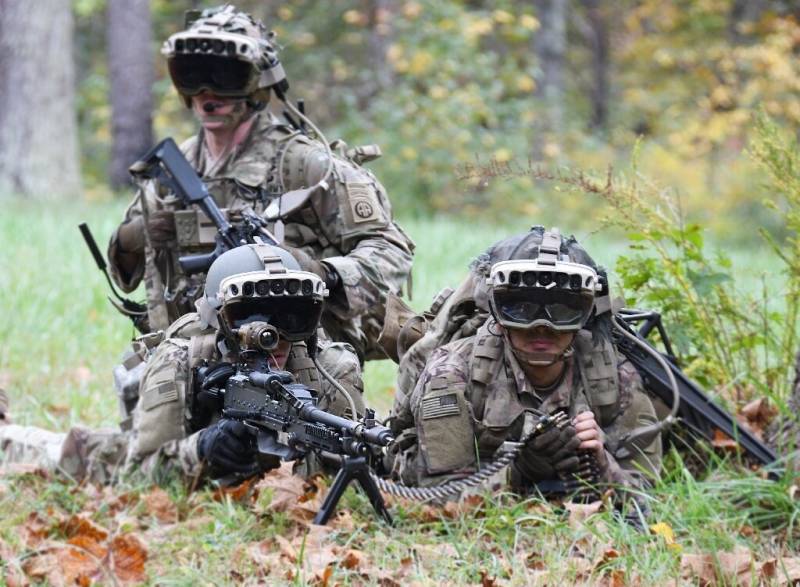
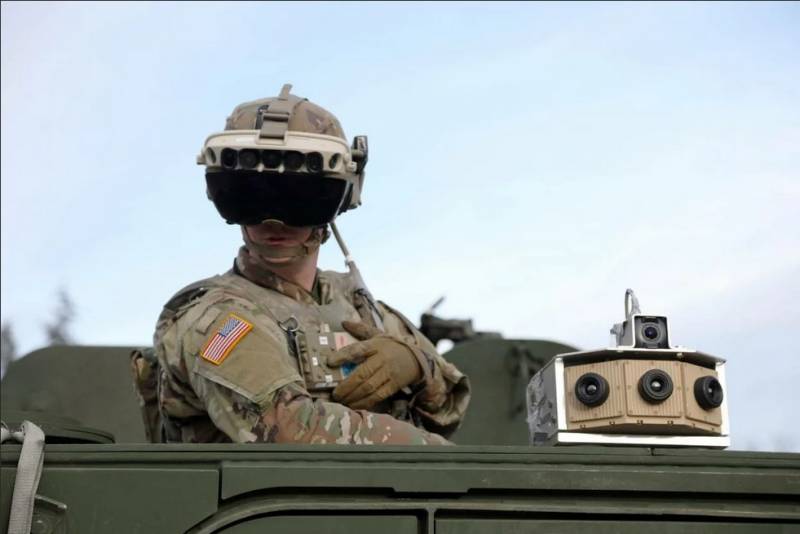
Information